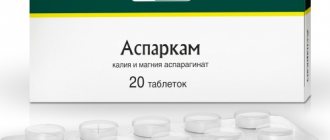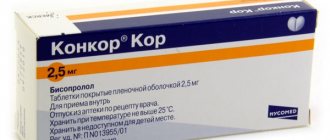According to statistics, candidiasis occurs in 9 out of 10 women during pregnancy. Most often, this disease manifests itself in the last trimester. But, despite the “harmless” symptoms, the infection can lead to serious consequences for both the expectant mother and the child.
Candidiasis or thrush develops due to excessive proliferation of the yeast-like fungus Candida albicans. In small quantities, its strains are present in the normal microflora of the vagina.
Causes of candidiasis in pregnant women
Candidiasis during pregnancy is becoming more common, despite the development of diagnostic and therapeutic trends in medicine. The main reasons are the adverse effects of external factors in combination with reduced immunity.
While expecting a child, a woman's body undergoes a restructuring. The intestinal microflora changes, and a deficiency of vitamins and minerals appears.
Dysbacteriosis leads to increased proliferation of pathogenic microorganisms, including Candida fungi. From the intestines they can spread to the vaginal mucosa.
Hormonal levels change. This factor acts in several directions at once.
Firstly, increased levels of progesterone inhibit the activity of the immune system, so adverse external influences such as hypothermia, overwork, and unbalanced nutrition can easily lead to the development of candidiasis.
Secondly, the action of hormones changes the vaginal mucosa, making it more susceptible to infections.
Thirdly, changes in hormonal levels lead to emotional disturbances, reduce resistance to stress, which provokes a decrease in the body’s protective functions and the development of thrush.
In addition to these specific features, candidiasis in pregnant women can develop for reasons common to all women:
- chronic infectious diseases, including genital diseases;
- the presence of thyroid pathology, diabetes mellitus, obesity;
- chronic diseases of the intestines (colpitis, dysbacteriosis), liver or kidneys;
- taking antibiotics or hormonal drugs;
- unbalanced diet with a predominance of sweet foods.
Candidiasis is a sign of trouble in the female body, a decrease in general immunity. Therefore, treatment of the disease should be aimed not only at destroying the fungus, but also at strengthening the immune system.
Symptoms and diagnosis of candidiasis
Vaginal candidiasis during pregnancy does not have symptoms that are different from those at any other time in a woman’s life. As a rule, patients complain of itching, white cheesy (flaky) discharge with a sour, unpleasant odor.
Itching and pain intensify during sexual intercourse and disappear for a while after hygiene procedures. On examination, irritation and redness of the external genitalia are noted.
But all these symptoms can indicate not only candidiasis, but also a number of other diseases (including STDs).
To clarify the diagnosis, the doctor writes out directions for diagnostic examinations:
- Microflora smear. During the procedure, a tampon is inserted into the vagina and the contents (mucus, discharge) are collected on it. The material is then dried on a viewing glass and examined under a microscope. The laboratory technician counts the number of bacteria, fungi and leukocytes. With vaginal candidiasis, the smear reveals fungi, a large number of leukocytes, characteristic of inflammatory reactions, and a predominance of pathogenic bacteria over beneficial ones. Read more: what a gynecological smear shows→
- Bacterial culture. It is not always carried out; it allows us to identify exactly which bacteria and fungi inhabit the vagina, as well as determine effective drugs for treatment.
Since it usually takes several days to obtain diagnostic data, the doctor prescribes therapy after the first examination and then, if necessary, supplements and adjusts it.
Candid-B6 - instructions for use
This drug is used to suppress fungal infections in the vagina. Comprehensively fights bacteria, trichomonas. It is important to adhere to the course prescribed in the instructions for use, otherwise regular recurrence of diseases will occur. The medicine is extremely effective against the fungi Malassezia furfur, Trichomonas vaginalis (Trichomona vaginali), Corynebacterium minutissimum.
Composition and release form
The drug Candide B6 is available in the form of vaginal suppositories (suppositories) without a white shell, oval, biconvex shape. On one side there is a sign V6, on the other there is a letter G. The package contains one strip of 6 capsules complete with an applicator. The active substance is clotrimazole, which occupies 99% of the mass of the suppository. The remaining substances are intended to create form and better absorption.
| № | Purpose of the drug | Substance name |
| 1 | Active healing substance | Clotrimazole 100.0 mg (one dose) |
| 2 | Formative substances | Corn starch, lactose, talc, magnesium stearate, sodium glycolate |
| 3 | Excipients | Adipic acid, colloidal silicon dioxide, methyl parahydroxybenzoate, propyl parahydroxybenzoate, sodium bicarbonate |
pharmachologic effect
The substance clotrimazole, a derivative of imidazole, disrupts the formation of ergosterol, an element that is one of the key elements for the formation of the fungal membrane. The drug successfully suppresses and destroys yeast, mold fungi, dermatophytes, pathogens of pityriasis versicolor and erythrasma, gram-negative and gram-positive bacteria. It is important to remember that the correct treatment and dosage of medication can only be prescribed by a doctor after laboratory tests.
- Mannik with milk in a slow cooker: recipes for a delicious pie
- Chocolate Cake Recipes
- Discharge in women with an unpleasant odor
Indications for use Candid-B6
The use of medicine in suppositories makes sense for fungal genital infections provoked by yeast-like fungi of the genus Candida or Trichonoma vaginalis (trichomoniasis, vulvovaginal candidiasis). Also prescribed for vaginal superinfections caused by bacteria susceptible to the drug. The drug Candid-B6 is prescribed for sanitation of the birth canal immediately before childbirth to exclude possible candidiasis in the child.
Treatment of candidiasis during pregnancy
Candidiasis is a fungal disease associated with decreased activity of the immune system. Therefore, its treatment includes the use of antifungal and immunostimulating agents.
Antifungal drugs, in turn, are divided into systemic (tablets, capsules for oral administration) and local (creams, suppositories, etc.).
Treatment of candidiasis during pregnancy should be comprehensive. Tablets and capsules destroy the fungus in the intestines, where its main focus is located, and local preparations act on the surface of the vaginal mucosa, quickly eliminating unpleasant symptoms.
Most often, the following are prescribed for the treatment of thrush in pregnant women:
- Systemic antifungal drugs: Nystatin, Pimafucin. They are allowed both during pregnancy and during breastfeeding, they are effective and non-toxic. More popular antifungal agents, for example, Diflucan and Fluconazole, are contraindicated in pregnant women.
- Local preparations: “Epigen Intim” (spray), “Pimafucin” (cream, suppositories), “Nystatin” (suppositories). The spray is used in combination with Nystatin or Pimafucin, quickly relieves inflammation and restores normal vaginal microflora. The selection of drugs in each specific case should be done by a gynecologist, since there are drugs that are contraindicated in the first trimester, but acceptable in the later stages.
- Local anti-inflammatory and antiseptic drugs. During pregnancy, the use of a solution of borax in glycerin (sodium tetraborate in glycerin) and brilliant green (brilliant green) is allowed. These products are applied to a gauze swab and mechanically clean the vaginal walls of fungus. This prevents its growth and relieves inflammation. In addition, the drugs are approved for use in the first three months of pregnancy, when other drugs are contraindicated.
- Immunomodulatory and restorative drugs. Excessive proliferation of pathogenic microflora in the intestines and vagina begins with a decrease in immunity, or in the presence of a chronic disease. To treat thrush during pregnancy, it is possible to prescribe multivitamins, Viferon suppositories, as well as probiotics with bifidobacteria (Bifidin, Bifidumbacterin).
When deciding how to treat candidiasis during pregnancy, you should first consult with a gynecologist.
All groups of drugs must be prescribed by a specialist, as they have their own contraindications. It is necessary to take into account the woman’s general health, tendency to allergies and other factors.
It is important to undergo therapy together with your sexual partner. Otherwise, the infection will manifest itself again. Men can use any antimycotic drug: Fluconazole, Nystatin, Diflucan, Nizoral, etc.
Folk remedies
In combination with medications, candidiasis during pregnancy can be treated with traditional methods:
- Baths with iodine and soda. For the first procedure, you need to dissolve 1 tsp in a liter of boiled warm water. soda and sit in the basin for about half an hour. For the second and subsequent procedures, add 1 tsp to the soda solution. Yoda. Do baths once a day until complete recovery.
- Douching with salt, soda and iodine. In one liter of boiling water you need to stir 2 tbsp. l. salt, boil the solution, cool until warm. Then, add 1 tbsp. l. soda and 0.5 tsp. Yoda. The douching procedure is carried out twice a day for 5 days.
- Irrigation with herbal infusion. To prepare the infusion, you need to mix 3 tbsp. l. chamomile, yarrow, calendula and sage. 2 tbsp. l. pour the resulting mixture with a liter of boiling water, leave for several hours, strain. Irrigation is carried out using a syringe bulb. The procedure is repeated twice a day for two weeks.
You cannot rely only on folk remedies; they are all local and do not completely eliminate the infection.
Treatment nuances
During the treatment of thrush during pregnancy, most antifungal drugs are contraindicated. They can lead to various developmental disorders of the fetus, including heart defects and pathologies of skull formation.
The drug Betadine, which is often used outside of pregnancy, should not be used; it affects the development and functioning of the thyroid gland of the unborn child.
Sometimes, having heard that taking probiotics is recommended for candidiasis, women begin to use drugs with lactobacilli, which create a favorable environment for the development of a fungal infection. It is important to remember that for thrush it is bifidobacteria that are needed.
With properly organized treatment, improvements become noticeable already on the second or third day. In some cases, by this time the symptoms have completely disappeared, creating the appearance of recovery.
In fact, a significant amount of fungus is still present in the body, and the positive effect is due to local elimination of the causative agent.
It is necessary to continue the course of treatment until the end, regardless of how you feel. This will help avoid relapses and the transition of candidiasis to a chronic form.
special instructions
To fully treat candidiasis and avoid reinfection, both partners must take Clotrimazole at the same time (for men there are forms in the form of creams, ointments, tablets). The use of vaginal suppositories during menstruation is not recommended. During treatment, you should refrain from sexual intercourse and use other intravaginal products (tampons, spermicides, etc.) is prohibited. Taking Candide B6 suppositories orally is prohibited (from a treatment point of view, it is useless).
In parallel with Candida B6 (Clotrimazole), it is recommended to use systemic drugs, for example, Metronidazole, for trichomoniasis. If candidiasis vulvitis is present, then vaginal suppositories are supplemented with external application of Candida cream. Patients with liver failure should monitor their liver condition. At the first signs of irritation or hypersensitivity, stop taking the drug. It is better to consult a doctor.
Prevention measures
Treating thrush during pregnancy is not an easy task, so you need to try to prevent the fungus from spreading.
To prevent candidiasis, you must adhere to the following recommendations:
- Wear clothes, and especially underwear, made from natural fabrics that allow air to pass through and prevent the creation of a damp and warm environment.
- Choose the right intimate hygiene products. They should not be aggressive and disturb the natural acidic environment of the vagina (the best option is with a neutral pH level).
- Avoid constipation and dysbiosis by consuming enough fresh fruits, vegetables, and, if necessary, preparations with bifidobacteria. If you find problems with the intestines, consult a doctor immediately.
- If you are prone to fungal infections, regularly carry out tests to determine the pH and, in case of deviations, contact a specialist.
- Maintain immunity: eat a balanced diet, take multivitamins, regularly walk in the fresh air, engage in physical activity (gymnastics, swimming, walking), if there are no contraindications.
Analogs
Substitute drugs belong to the ATC level 4 code. Replacement of Candide B6 is required in case of persistent individual sensitivity or non-acceptance of the drug, when the body does not respond to the use of the drug. Analogues of Candida suppositories can be vaginal tablets or oral medications that do not contain Clotrimazole (in cases of allergy to the substance). What is the drug replaced with:
- Clotrimazole Acri;
- Clotrimazole Akrikhin;
- Lotrimin;
- Faktodin;
- Fungiciple.
Consequences of candidiasis for mother and child
Thrush is a disease that, in the absence of timely treatment, leads to unpleasant consequences for the expectant mother and baby.
Some women, especially those with a chronic form of the disease, have a question: is it possible to get pregnant with candidiasis? Of course, this is physically possible. But by treating the disease in advance, a woman will avoid many complications.
A fungal infection makes the vagina less elastic, which causes cracks and external and internal tears to form during childbirth.
For this reason, at the end of pregnancy, the gynecologist conducts a thorough examination of the woman in the chair and, having detected signs of microflora disturbance, prescribes treatment.
Thrush complicates the healing process of sutures after childbirth: suppuration and inflammation often occur, requiring antibiotics.
The consequences for the child are more serious. The fungus penetrates the internal organs of the newborn, affecting the eyes, nose, mouth, skin and mucous membranes of the respiratory system. This leads to health problems and, in rare cases, death.
Due to the characteristics of the female body, thrush is a common problem during pregnancy. Natural changes in hormonal levels and decreased immunity in the expectant mother lead to the development of infection.
Treatment is complicated by the fact that many drugs are contraindicated during pregnancy, so from the first trimester it is worth paying special attention to preventive measures.
Author: Olga Khanova, doctor, especially for Mama66.ru
Symptoms
Signs of yeast in women during pregnancy:
- The appearance of copious vaginal discharge. The nature of the discharge is different, the color can vary from transparent and white to yellowish-gray, the consistency is curdled, less often watery. The smell is sour milk or rotten fish.
- The presence of a burning sensation when urinating, constant itching, which intensifies at night.
- Changes in the appearance of the genital organs - swelling, redness, swelling.
- Painful sexual intercourse.











